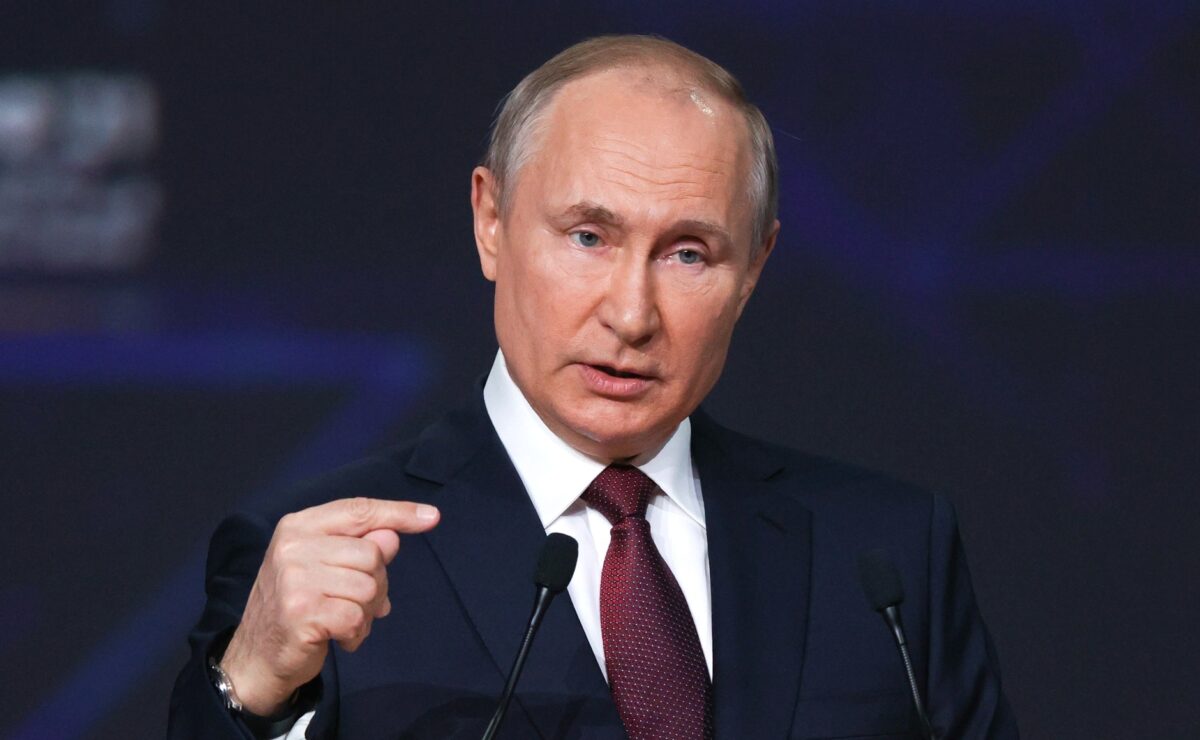Vladimir Putin’s visit to Tehran earlier this month was his first trip outside the former area of the former Soviet Union since his military invaded Ukraine. The Russian president’s choice reflects the importance he places on improving ties with the Islamic Republic.
During his visit, Putin met with Iranian Supreme Leader Ayatollah Ali Khamenei and President Ebrahim Raisi, as well as Turkish President Recep Tayyip Erdogan. Putin visited to join the Tehran summit in the context of the 2017 Astana Process . Established between Turkey, Russia, and Iran in Kazakhstan’s capital in 2017, the forum is Moscow’s alternative to the Geneva peace process on Syria. Logically, Syria – more specifically, Russian and Iranian consent for another Turkish incursion into the country’s northwest – stood at the top of the leaders’ agenda.
More Than a Message to the West
For now, a Turkish invasion is staved off. For Putin the summit had another, especially important outcome: Khamenei’s public support for the war in Ukraine. Iran’s Supreme Leader echoed Putin’s own narrative practically to the word. “If you hadn’t taken on the initiative yourself, another side would have taken on the initiative and caused the war,” Khamenei said. “NATO is a dangerous entity.”
The summit showed that a close relationship with Iran is now going to be even more important for Moscow. This convergence is a natural next step, and not only because of Russia’s isolation from the West. Indeed, the bilateral relationship was already growing before the war in Syria brought it to unprecedented heights.
Putin’s trip, then, was not solely about sending a message to the West that he is not alone. Russia and Iran are set to develop their political and economic ties. Earlier, senior Russian officials had highlighted that the country’s wheat is available to friendly nations, and Russia is probably set to supply more wheat to Iran. The countries also continued to discuss ways to circumvent sanctions through a land-sea north-south transport corridor, connecting Russia to the Persian Gulf, that would carry Russian goods to India.
After the summit, Putin also ratified a free-trade protocol between Iran and the Eurasian Economic Union – Putin’s alternative to the European Union – thus taking another step toward establishing a free-trade zone between Russia and Iran. That possibility first came under discussion more than three years ago. Lastly, Iran and Russia’s state-owned Gazprom reportedly signed an oil and gas deal, though details remain murky. While some reports claimed a potential value of $40 billion, Gazprom’s own announcement did not announce a set figure.
A Strategic Set
Commentators will rightly point out that the official Russian and Iranian rhetoric over the economic deals is overblown, and it remains unclear to what extent Russia and Iran can help each other’s economy. But this is somewhat beside the point.
Russia will not split from Iran – in Syria or elsewhere. Putin, for his part, will continue to bank on long-term disunity in the West, whose leaders have not known war on European soil of the scale and magnitude that Ukraine is experiencing today. No one should have been shocked that Russian forces attacked the Odesa port only a day after Moscow signed a deal that was supposed to lift Russia’s Black Sea blockade and ease the world’s food crisis. This is how Russia does war.
Meanwhile, Tehran’s nuclear program is galloping ahead, according to International Atomic Energy Agency chief Rafael Grossi. Kamal Kharrazi, Khamenei’s foreign policy advisor, says Iran is now a nuclear threshold country. All along, Western leaders continue to rely on Russia in negotiations over Iran’s nuclear program, despite Putin’s invasion of Ukraine.
When it comes to the Middle East, dismissing Russia and Iran as weak actors gives the two countries strategic initiative in places such as Syria. Together, they can still thwart Western interests and threaten regional security. Even more than before, Russia and Iran are integral parts of the same strategic set.
Dr. Anna Borshchevskaya is a senior fellow at The Washington Institute, focusing on Russia’s policy toward the Middle East. In addition, she is a contributor to Oxford Analytica and a fellow at the European Foundation for Democracy. She was previously with the Atlantic Council and the Peterson Institute for International Economics. A former analyst for a U.S. military contractor in Afghanistan, she has also served as communications director at the American Islamic Congress. Her analysis is published widely in publications such as Foreign Affairs, The Hill, The New Criterion, and the Middle East Quarterly. She is the author of the 2021 book, Putin’s War in Syria: Russian Foreign Policy and the Price of America’s Absence (I.B. Tauris, an imprint of Bloomsbury Publishing). Until recently, she conducted translation and analysis for the U.S. Army’s Foreign Military Studies Office and its flagship publication, Operational Environment Watch, and wrote a foreign affairs column for Forbes. She is the author of the February 2016 Institute monograph, Russia in the Middle East. She holds a doctorate from George Mason University.

